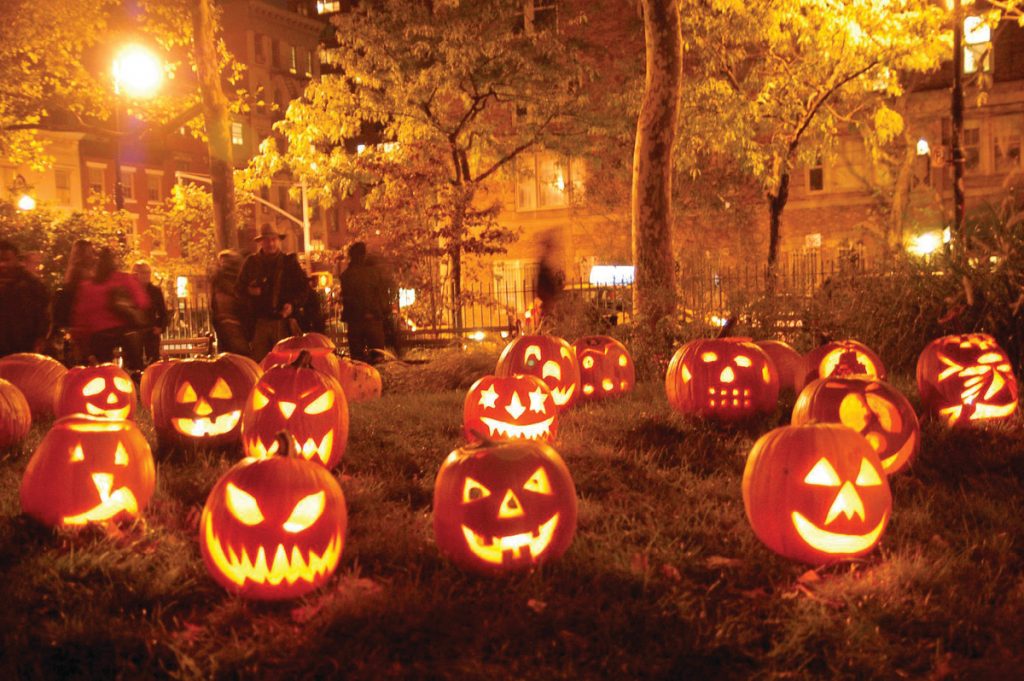It’s time for trick or treat!!
TRICK OR TREAT???
Hold on.
Before I continue, do you guys actually know the history of Halloween? If yes, that’s good. If no, let’s take a look at the origins of Halloween and its odd traditions first.

Samhain
Halloween also known as All Hallows’ Eve that can be traced back about 2,000 years to a pre-Christian Celtic festival held around the first day of November called Samhain (pronounced “sah-win”), which translates to “summer’s end” in Gaelic, according to the Indo-European Etymological Dictionaries.
However, the exact nature of Samhain is not fully understood because ancient records are very few and scattered. But, what is known about Samhain is that it was a yearly communal meeting at the end of the harvest year where resources would be gathered for the winter months and animals were brought back from the pastures. Samhain was also the time for communing with the dead according to folklorist John Santino. Moreover, he added that there was a belief that it was a day when spirits of the dead would cross over into the other world. Such moments have always been thought to be special and supernatural. Activities such dressing up as the living dead and fake gravestones adorning front laws wouldn’t be tolerated at other times of the year. So, Halloween provides a safe way to play with the concept of death.
According to the ancient sagas, Samhain was the time when tribal people paid tribute to their conquerors and when the sidh (ancient mounds) might reveal the magnificent palaces of the gods of the underworld. Samhain was less about death or evil but more about the changing of seasons and preparing for the dormancy and rebirth of nature as summer turned to winter.
Although a direct connection between Halloween and Samhain has never been proven, many scholars believe that because All Saints’ Day or All Hallows’ Mass (celebrated on 1st Nov) and Samhain are so close together on the calendar, they influenced each other and combined into the celebration now called Halloween.
Costumes and Trick-or-Treating
The tradition of dressing up in costumes and trick-or-eating may go back to the practice of “mumming” and “guising,” in which people would go door-to-door asking for food. The practice is also related to the medieval custom of “souling” in Britain and Ireland, in which poor people would knock on doors on Hallow Mass, asking for food in exchange for prayers for the dead.
Trick-or-treating didn’t start in the United States until World War II, but American kids were known to go out on Thanksgiving and ask for food and this was known as Thanksgiving begging. Mass solicitation rituals are pretty common and usually associated with winter holidays. While one tradition didn’t necessarily cause the others, they were similar and parallel.
Tricks and Games
In the late 1800s, the tradition of playing tricks on Halloween was well established. In the United States and Canada, the tricks included tipping over outhouses, opening farmers’ gates and egging houses. But by the 1920s and 1930s, the celebrations more closely resembled unruly block parties and the acts of vandalism got more serious. Some people believe that because of the tricks and pranks which started to get dangerous and out of hand, parents and town leaders began to encourage dressing up and trick-or-treating as a safe alternative to doing pranks.
Another Halloween ritual involved looking in a mirror at midnight by candlelight and it was said that an image of a person’s future husband would appear in the mirror. A scary variation of this later became the “Bloody Mary” ritual familiar to many school kids. Like many childhood games, it was likely done for fun, though some people might have took it seriously.
Christian/Irish Influence
Some evangelical Christians have expressed concern that Halloween is somehow satanic because of its pagan roots. However, ancient Celts didn’t worship anything resembling the Christian devil and had no concept of it. In fact, the Samhain festival had long since vanished by the time the Catholic Church began persecuting witches in its search for satanic cabals.
As for modern Halloween, the beliefs and customs were brought to North America by the earliest Irish Immigrants as well as the great waves of Irish immigrants escaping the famine in their home country in the first half of the 19th century. By the middle of the twentieth century, Halloween had largely become a children’s holiday in North America. Since that time, the holiday’s popularity has increased dramatically and has been celebrated by adults, communities and institutions alike.
Through the ages, various supernatural entities including fairies and witches have come to be associated with Halloween, and nowadays, dressing up as ghosts or witches has become fashionable and more widespread and commercialized. To think that this widespread celebration started off more than a century ago in Ireland, where it was mainly thought as a time when spirits of the dead could return to their old haunting grounds.
Are you guys surprised by the history of Halloween?! Well, we don’t really celebrate it in Malaysia but, it is always a good thing to gain new knowledge.
HAPPY HALLOWEEN !!!

